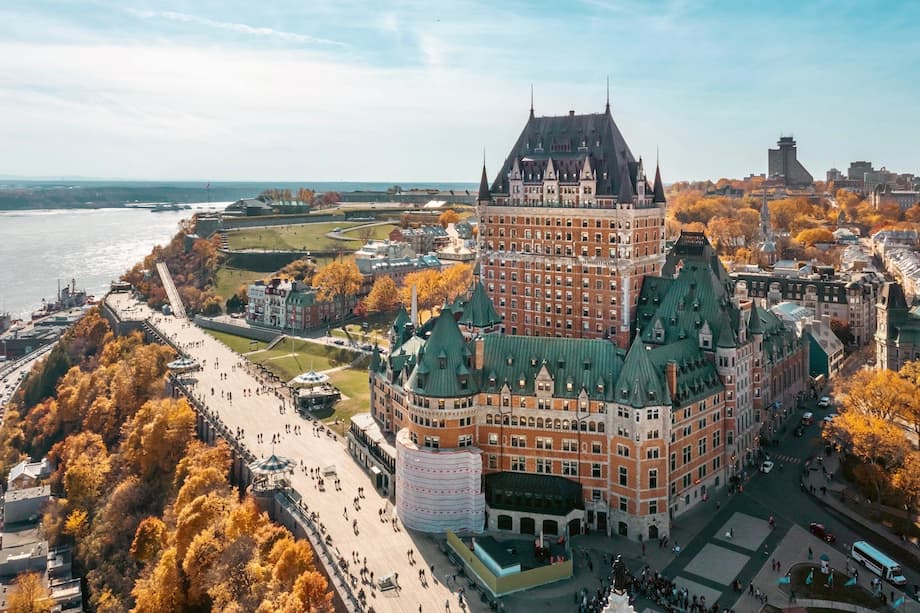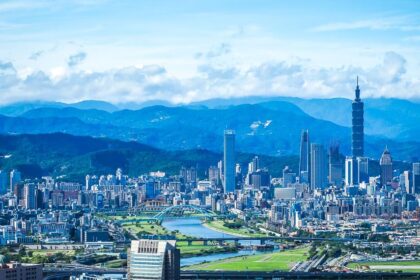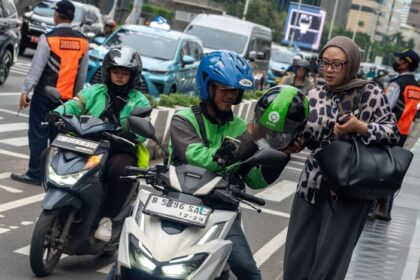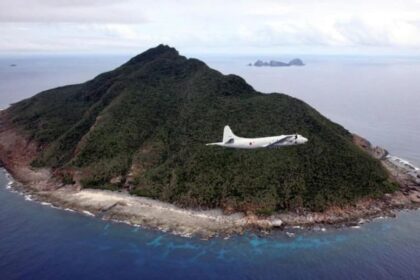The Rise of K-Drama Tourism: How TV Series Are Changing Global Travel
In recent years, the world has witnessed a remarkable shift in travel trends, driven not by traditional sightseeing or culinary adventures, but by the irresistible pull of pop culture. Among the most influential forces in this movement is the global phenomenon of Korean television dramas, or K-dramas. These shows, celebrated for their compelling storytelling, charismatic actors, and stunning cinematography, have inspired millions of fans to embark on journeys to the real-world locations where their favorite scenes were filmed. This trend, known as “set-jetting,” is transforming the tourism landscape in South Korea and beyond, turning filming sites into must-visit destinations and breathing new life into local economies.
- The Rise of K-Drama Tourism: How TV Series Are Changing Global Travel
- What Is Set-Jetting and Why Are K-Dramas Leading the Trend?
- Seoul: The Heart of K-Drama Pilgrimages
- Exploring Korea Beyond Seoul: Rural and Coastal Destinations
- International Impact: K-Drama Tourism Goes Global
- How K-Drama Tourism Is Shaping Local Economies
- Experiencing K-Drama Locations: What Fans Can Expect
- Why K-Drama Tourism Resonates Globally
- In Summary
What Is Set-Jetting and Why Are K-Dramas Leading the Trend?
Set-jetting refers to the act of traveling to destinations featured in movies or TV shows. While the concept is not new—think of the crowds at New Zealand’s Hobbiton or Croatia’s Dubrovnik after Game of Thrones—K-dramas have taken it to new heights. The unique blend of romance, drama, and picturesque backdrops in these series has captivated audiences worldwide, particularly in Asia, North America, and Europe. As a result, fans are eager to step into the worlds of their favorite characters, retracing their steps and reliving iconic moments.
According to the Korea Tourism Organization, over a third of the 1.4 million visitors to South Korea in September 2024 cited exposure to Korean Wave (Hallyu) content—including K-dramas and K-pop—as a key reason for their trip. This surge marks a milestone in the country’s post-pandemic tourism recovery and underscores the powerful influence of entertainment on travel decisions.
Seoul: The Heart of K-Drama Pilgrimages
Seoul, South Korea’s vibrant capital, is the epicenter of K-drama tourism. The city’s blend of modern skyscrapers, historic palaces, and trendy neighborhoods provides a rich tapestry for filmmakers and tourists alike. Iconic landmarks such as N Seoul Tower, Bukchon Hanok Village, and the Han River have appeared in countless dramas, making them essential stops for fans.
N Seoul Tower, perched atop Namsan Mountain, is a recurring setting for romantic rendezvous in series like My Love from the Star and Boys Over Flowers. Couples flock here to hang love locks and admire panoramic views of the city, echoing the heartfelt moments they’ve seen on screen. Bukchon Hanok Village, with its traditional Korean houses and winding alleys, offers a glimpse into the country’s past and has featured in dramas such as The Heirs and Goblin.
The Han River, running through the heart of Seoul, is another staple of K-drama storytelling. Its riverside parks, bridges, and cruise boats set the stage for confessions, breakups, and reunions, making it a living backdrop for fans to recreate their favorite scenes.
Beyond the Screen: Themed Tours and Official Initiatives
Recognizing the economic and cultural potential of K-drama tourism, the Seoul Metropolitan Government has launched initiatives like the Seoul Quality Tour Programme. This program offers curated day tours that highlight the city’s cultural heritage, cuisine, and K-content, including visits to filming locations and K-pop attractions. The demand for immersive experiences is particularly strong among travelers in their 20s and 30s, who seek not just sightseeing but a deeper connection to the stories and stars they love.
Tour companies have responded with specialized K-drama tours, guiding visitors to shooting spots from series such as Itaewon Class, Crash Landing on You, and Squid Game. These tours often include stops at trendy cafes, restaurants, and even preserved sets, allowing fans to step directly into the world of their favorite dramas.
Exploring Korea Beyond Seoul: Rural and Coastal Destinations
While Seoul remains the primary hub for K-drama tourism, the impact of set-jetting is spreading to rural and coastal regions. Shows like Hometown Cha Cha Cha and When Camellia Blooms have put lesser-known destinations such as Pohang and its surrounding fishing villages on the map. Visitors are drawn by the promise of experiencing local culture, sampling fresh seafood dishes like Mulhoe (spicy raw fish soup), and exploring murals and preserved sets from the series.
Sunshine Land, a theme park in Nonsan replicating 1900s Seoul, has become a pilgrimage site for fans of the historical drama Mr. Sunshine. The park features meticulously recreated sets, from vintage trams to iconic Buddhist bells, offering an immersive journey into the past. As one tour guide observed, “For me, it was just a studio, but for them, it was something much more.”
Jeju Island, with its pristine beaches, volcanic landscapes, and rural villages, is another favorite among drama producers and tourists. Series like Warm and Cozy and Our Blues showcase the island’s natural beauty, inspiring fans to explore its scenic trails and coastal walks.
International Impact: K-Drama Tourism Goes Global
The influence of K-dramas extends far beyond Korea’s borders. As production companies increasingly shoot abroad, fans are following in their footsteps, boosting tourism in destinations across Europe and North America.
Switzerland: The Crash Landing on You Effect
Few shows have had as dramatic an impact as Crash Landing on You, which filmed key scenes in Switzerland. The picturesque towns of Interlaken, Grindelwald, and Iseltwald, along with the Sigriswil Panorama Bridge and Lake Brienz, have seen a surge in visitors from Asia and beyond. Tour companies now offer packages that trace the footsteps of the show’s protagonists, and attractions like Jungfrau Railways report increased interest from K-drama fans eager to experience the breathtaking alpine scenery featured in the series.
Canada: Goblin’s Québec City Pilgrimage
In Québec City, Canada, the release of Goblin (Guardian: The Lonely and Great God) sparked a 500 percent increase in Korean guest bookings at the Fairmont Le Château Frontenac. The hotel, dubbed the “Goblin Hotel,” even launched a special Goblin-themed package, complete with access to filming locations and themed experiences. Fans flock to landmarks such as the Petit-Champlain district, Pierre-Dugua-De Mons Terrace, and Samuel-Holland Park, reliving the show’s most memorable moments against the backdrop of the city’s historic architecture.
One fan described the experience:
Québec City is rich in history and culture, and its connection to Goblin makes it a special place for fans of the drama.
Germany and Spain: Queen of Tears and Memories of the Alhambra
In Germany, the romantic drama Queen of Tears has inspired fans to visit Berlin and Potsdam, following the honeymoon route of the show’s lead couple. Landmarks such as Berlin Cathedral, Old Market Square, and Sanssouci Palace have become popular stops, with local tourism boards publishing guides for K-drama enthusiasts.
Spain’s Granada, home to the Alhambra palace and fortress, saw a spike in visitors after Memories of the Alhambra aired. Fans are particularly drawn to the Nasrid Palaces and the Court of the Lions, eager to immerse themselves in the show’s blend of history and fantasy. Additional scenes filmed in Girona and Slovenia have also piqued the interest of international travelers.
How K-Drama Tourism Is Shaping Local Economies
The economic impact of K-drama tourism is significant. Hotels, restaurants, and tour operators in both urban and rural areas are seeing increased bookings and revenue. In some cases, local governments and businesses have created special packages, themed experiences, and even pop-up events to cater to the influx of fans.
For example, the Fairmont Le Château Frontenac in Québec City launched a Goblin Package, while Jungfrau Railways in Switzerland offers tours to filming sites from Crash Landing on You. In Seoul, the city government partners with streaming platforms like Netflix to host events such as the Squid Game finale parade, drawing thousands of visitors and generating global media attention.
Experts note that while most K-drama tourism is concentrated in Seoul, there is growing interest in developing resources and attractions in rural regions. This diversification not only spreads the economic benefits but also introduces travelers to lesser-known aspects of Korean culture and history.
Experiencing K-Drama Locations: What Fans Can Expect
For many fans, visiting a K-drama filming location is more than just sightseeing—it’s an emotional journey. Walking through the same streets, sitting in the same cafes, or standing on the same bridges as beloved characters creates a powerful sense of connection and nostalgia. Tour operators often enhance the experience with guided storytelling, photo opportunities, and themed activities.
Some tours, like the 14-Day Korean Drama & K-Pop Filming Locations Tour, offer a comprehensive immersion into the world of Hallyu. Participants visit iconic sites from Seoul to Jeju Island and Busan, exploring both historical landmarks and contemporary hotspots. Themed cafes, restaurants, and even university campuses featured in campus romances add layers of authenticity and excitement.
Events and Festivals: Bringing K-Drama to Life
Special events, such as the K-Content Seoul Travel Week and the Squid Game finale parade, further blur the line between fiction and reality. These festivals feature parades, fan meetings with actors and directors, traditional games, and pop-up booths offering travel information and local delicacies. Such initiatives not only celebrate the success of K-dramas but also foster a sense of community among fans from around the world.
Why K-Drama Tourism Resonates Globally
The appeal of K-drama tourism lies in its ability to blend fantasy with reality. For international fans, especially those from countries like India, the United States, and Thailand, visiting filming locations is a way to step directly into the stories that have touched their hearts. The experience is often described as a personal love story between the traveler and the world of K-dramas.
As one Indian fan put it:
Visiting K-drama filming locations is not just about sightseeing—it is about reliving emotions, celebrating characters, and experiencing the blend of modern and traditional culture that makes Korean dramas so universally appealing.
In Summary
- K-dramas have sparked a global set-jetting trend, inspiring fans to travel to filming locations in South Korea and around the world.
- Seoul remains the heart of K-drama tourism, with iconic sites like N Seoul Tower, Han River, and Bukchon Hanok Village drawing visitors year-round.
- Rural and coastal destinations such as Pohang and Jeju Island are gaining popularity thanks to their appearances in hit series.
- International locations featured in K-dramas, including Switzerland, Canada, Germany, and Spain, have seen significant increases in tourism.
- Specialized tours, themed packages, and official events enhance the fan experience and boost local economies.
- K-drama tourism is more than sightseeing—it’s an emotional journey that connects fans to the stories and cultures they love.












